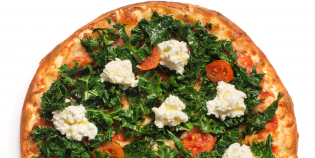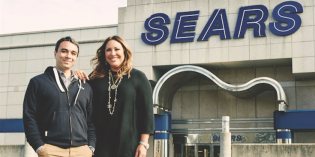 SXSW has a reputation as the meeting place for market-leading startups and brands who want to jump up the adoption curve. But it’s also a chance for digital marketers to seek advice from the current statesmen of social and mobile in the flesh, including Kevin Knight, Facebook’s lead of global creative solutions, who is speaking on a panel Saturday alongside marketing execs from Frito-Lay and Pepsi.
SXSW has a reputation as the meeting place for market-leading startups and brands who want to jump up the adoption curve. But it’s also a chance for digital marketers to seek advice from the current statesmen of social and mobile in the flesh, including Kevin Knight, Facebook’s lead of global creative solutions, who is speaking on a panel Saturday alongside marketing execs from Frito-Lay and Pepsi.
Before his session, which boldly positions “brand fans” as the new marketers, Marketing spoke to Knight about what Facebook Graph Search means for marketers, what made the Lay’s Do Us A Flavor campaign a success, and why begging for likes will make a brand seem desperate.
Many marketers are apprehensive to give up control and let consumers on social into the marketing process. What’s the advantage of brands crowdsourcing content and ideas from Facebook fans?
A marketer’s goal is for their product to rise above being a commodity to something that triggers an emotional response and that the consumer feel a personal connection with it. Crowdsourcing (whether it’s content or products) lets people express that emotional connection they have with the brand. It may deviate slightly from the brand pyramid but in marketing, as in so many other things, perception is reality.
Brands don’t have to let go altogether; smart crowdsourcing and fan engagement can help set the right tone through crafting the experience, actively participating in the conversation, and celebrating and amplifying the content that most aligns with the brand’s strategy. Crowdsourcing programs don’t have to be entirely open-ended either. You may invite fans to create a new flavor or you may just invite them to decide which of three agency-created commercials will air on TV.
You’re speaking alongside marketers from Pepsi/Frito-Lay. What lessons can marketers learn from how Pepsi and Lays brands have engaged with their fans on Facebook?
Crowdsourcing isn’t particularly new. With Lay’s in particular, I think the number one thing for others to take note of is that, with Do Us A Flavor, Lay’s moved beyond just the consumer insight: everyone’s got an idea for a chip flavour, to the social insight: if I could create any flavour in my imagination, the one I choose will be a reflection of my personality, preferences, ideals, tastes, sense of humor, etc. It will be an expression of my identity. What happens then is that my friends engage with that expression of identity the way they would if I were recounting a story or talking about my favourite movie. That conversation amongst friends takes place as usual, but now your brand is at the centre of it.
Another talk at SXSW focuses on Facebook graph search. What new marketing opportunities does graph search provide for brands?
It’s still early days for graph search, but I think marketers should be excited about this for a few reasons. First, it’s a really great thing for Facebook’s users and what’s great for Facebook’s users helps to further develop a vibrant social ecosystem in which people and brands interact. Of course, graph search also provides an opportunity for more branded content to be discovered. One specific opportunity is for marketers to better understand their consumers. For example, searching “bands liked by people who like Pepsi” might inform the brand’s strategy for partnering with musicians.
What’s the most effective way for new brands or marketers looking to increase their social presence to gain Facebook fans?
Many marketers don’t need to gain fans; they need to figure out the right ways to engage with the fans they already have at scale. By analogy, many brands have already built huge stadiums and rather than focusing on filling seats they focus on making those stadiums even bigger. Both Pepsi and Lay’s have done some amazing things on Facebook over the past few months and both brands have picked up many, many new fans. But their focus – and it’s something other brands should take note of – hasn’t been on getting new likes; it’s been on creating meaningful interactions with consumers.
You once tweeted that “Asking people to LIKE your post is like telling people to laugh at your joke.” If asking directly isn’t the best way of cultivating likes, what is?
Authenticity is incredibly important in today’s speed-of-the-internet world. Authentic connections with consumers yield authentic business results. Brands should definitely want people to like their content – that spreads the content virally to friends – but the best way to do that is to make authentically great content that resonates with consumers. If you beg for likes, you sound desperate. You sound like someone just checking the social media box rather than using social media as a way to connect authentically with people.
What Facebook metrics do you think are the most important? Should marketers be aiming for likes, shares, comments or a growing fan base?
The most important thing marketers can measure is the return on their Facebook investment – so I encourage everyone marketing on Facebook to integrate Facebook into whatever measurement solution they rely on for other media. As far as Facebook-specific metrics, my favorite is “viral reach” – that’s the number of people you’re reaching with content that a friend has engaged with. For example, if Pepsi posts a photo and I like that photo, some of my friends may see a story in their news feed that says “Kevin Knight likes Pepsi’s photo,” along with the photo itself. If Pepsi uses sponsored stories, even more of my friends will see that story. That’s why I like “viral reach” – it gives you a sense for how social your content is as well as the kind of scale you’re getting.









